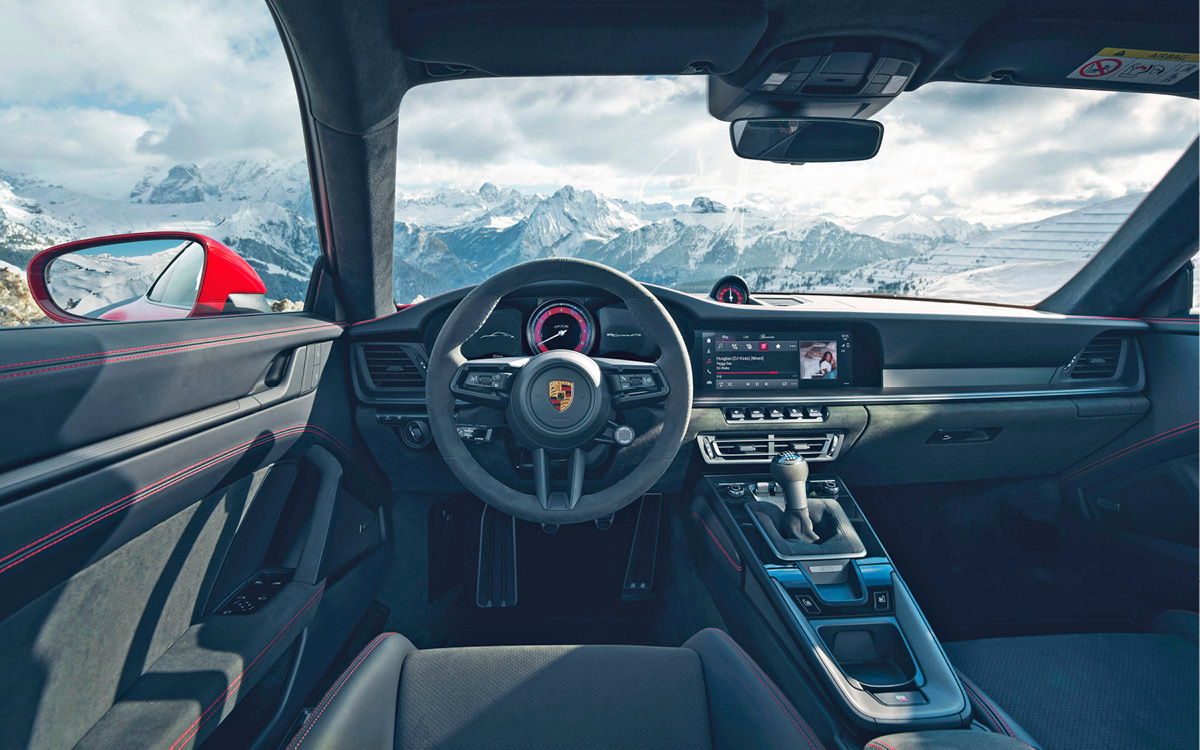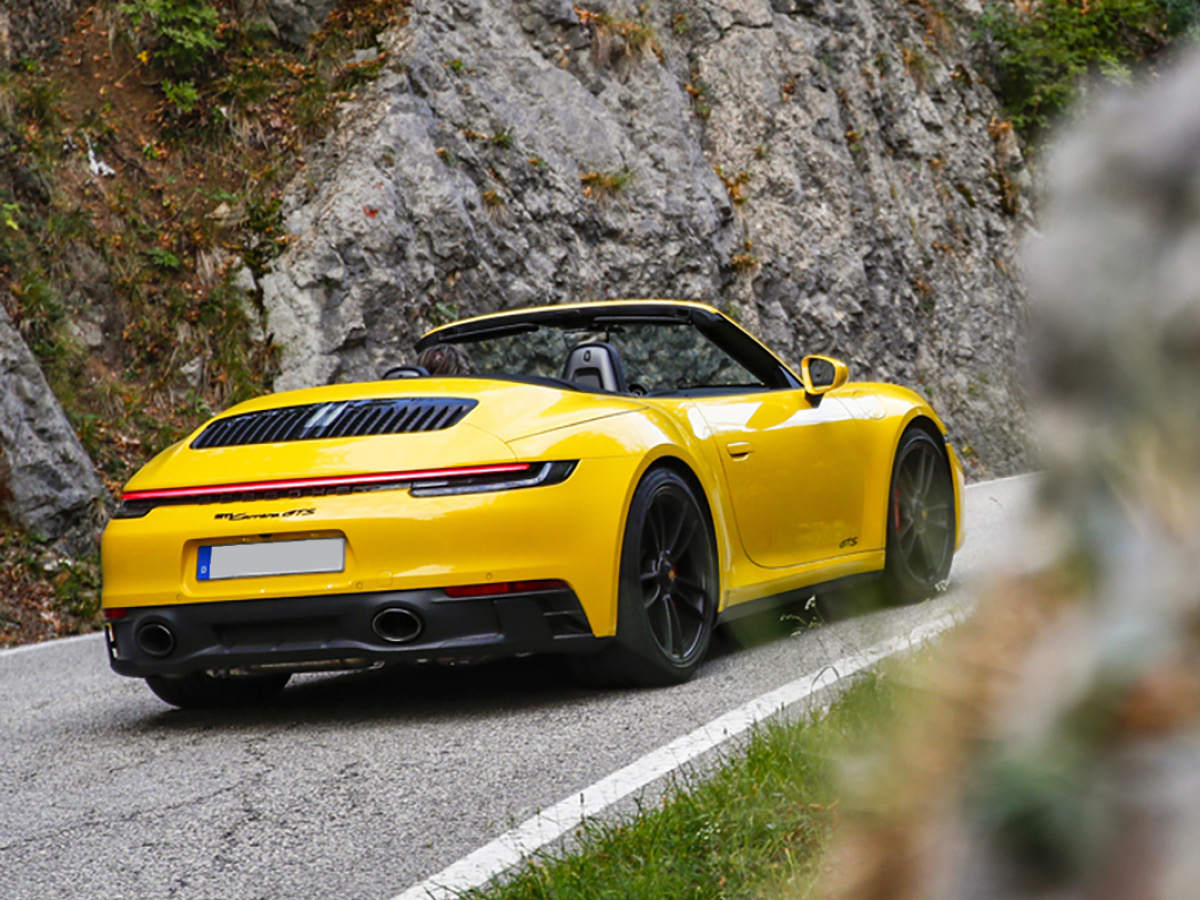Middle Child of the 911 Family is a Rowdy One
A half-century ago, Porsche customers were giddy about having a choice of six 911s, counting the coupe and Targa versions of the 911T, E and S. At our last count in early May 2023, the Porsche USA website showed a staggering 28 different versions populating the current Porsche 911 lineup, including special editions.
This wide selection ranges from the $114,400 911 Carrera coupe to the $272,300 911 Sport Classic. For some models, there are coupe, Targa, and Cabriolet versions, plus a choice of rear-wheel drive or all-wheel drive. There’s even the endearingly bonkers off-road-oriented 911 Dakar.
For now, we’re looking at the car that sits about in the middle of the lineup and packs enough punch to satisfy all but the most power-hungry and track-oriented: the 911 Carrera GTS, starting at $151,900 for the rear-wheel drive coupe version.
But that’s just one part of this sub-group. Let’s have a look.
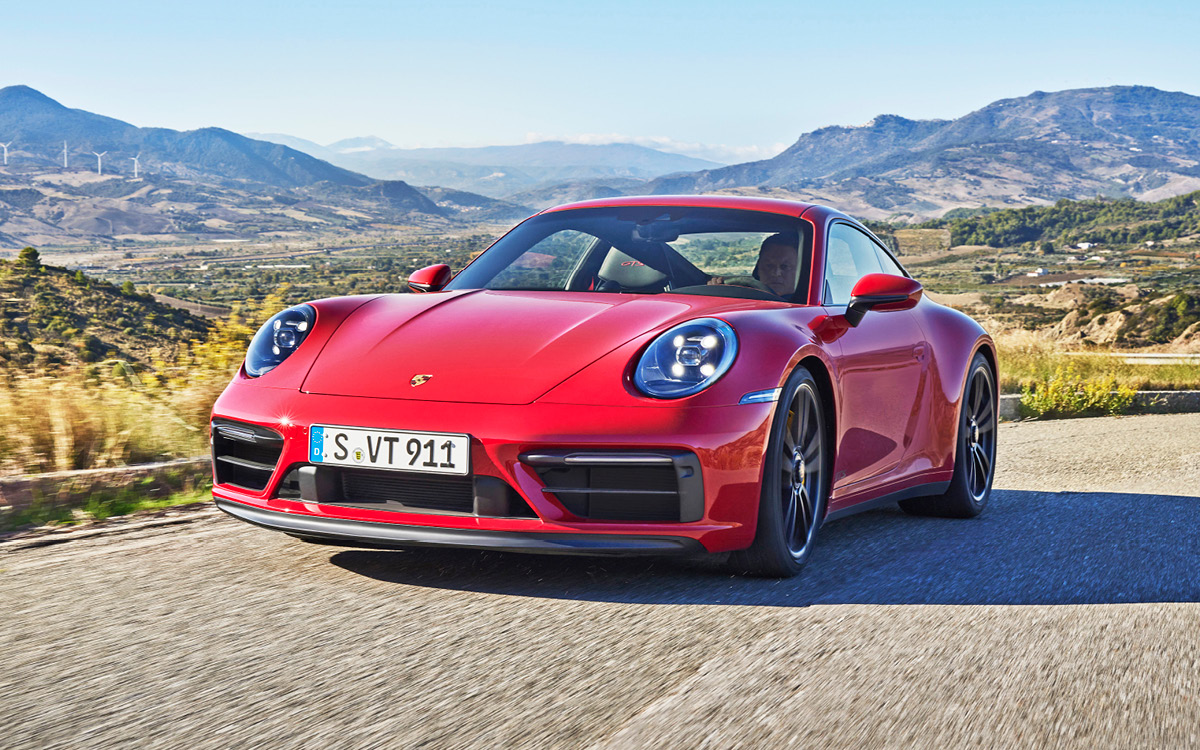
The Five Faces of 911 GTS
When we say we’re looking at the 2023 911 Carrera GTS, we’re talking about five different models: Coupe and Targa GTS, the AWD Carrera 4 GTS versions of both bodies, and the 911 Targa 4 GTS, which is AWD only. All models come standard with the eight-speed dual-clutch PDK transmission. For the 911 GTS rear-wheel drive coupe and Cabriolet only, the seven-speed manual transmission is a no-cost optional choice.
The common thread binding all five GTS variants is the 3.0-liter twin-turbo flat-six engine that belts out 473 hp at 6,500 rpm and 420 lb-ft of peak torque at a super-low 2,300 rpm. Those increases of 30 hp and 30 lb-ft over the 911 Carrera S comes courtesy of a 16-percent jump in turbo boost pressure (18.6 psi vs. 16.0 psi). You might not feel the difference in acceleration performance, so is that all you get for the $19,600 premium over the Carrera S? It certainly is not.
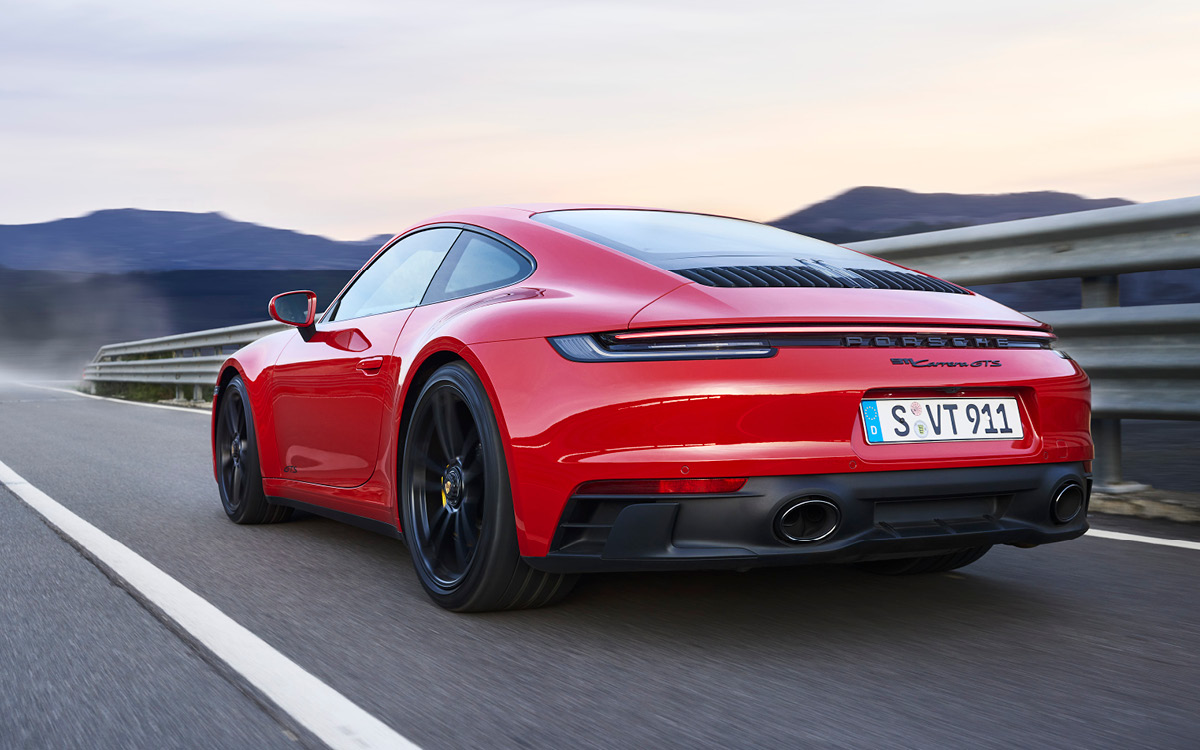
Really Fast, Straights or Curves
First, did we mention how fast the 911 Carrera GTS is? The rear-wheel drive coupe with PDK transmission blasts from 0-60 in 2.8 seconds and down the quarter mile in 10.9 seconds at 128 mph, according to Car and Driver. According to Porsche, it tops out at 193 mph.
Porsche transforms the Carrera S into the GTS with a carefully curated and tested group of chassis bits, some of which are exclusive to this model. The PASM Sport Suspension with adaptive suspension lowers the GTS by almost a half-inch compared to the S. Rear springs are 18 percent stiffer, and the front springs are almost 50 percent stiffer. The 911 Targa 4 GTS keeps its standard suspension calibration, because Porsche says Targa customers prefer the comfort for year-round driving.
While wheel size remains the same as for the S (20 x 8.5-in. front, 21 x 11.5-in. rear), the GTS gets the lighter wheels from the 911 Turbo S, featuring center-lock hubs. (Conventional, more convenient five-lug wheels are a no-cost option.) Standard tires are Pirelli P Zero PZ4 (245/35ZR-20 in front and 305/30ZR-21 in back). Brakes are larger and use the calipers from the Turbo. Larger still are the optional carbon-ceramic brakes. Fun fact: At 16.1-in. diameter in front and 15.6-in. at the rear, the rotors are larger than the 15-in. wheels of the original 1976 Porsche 911 Turbo.

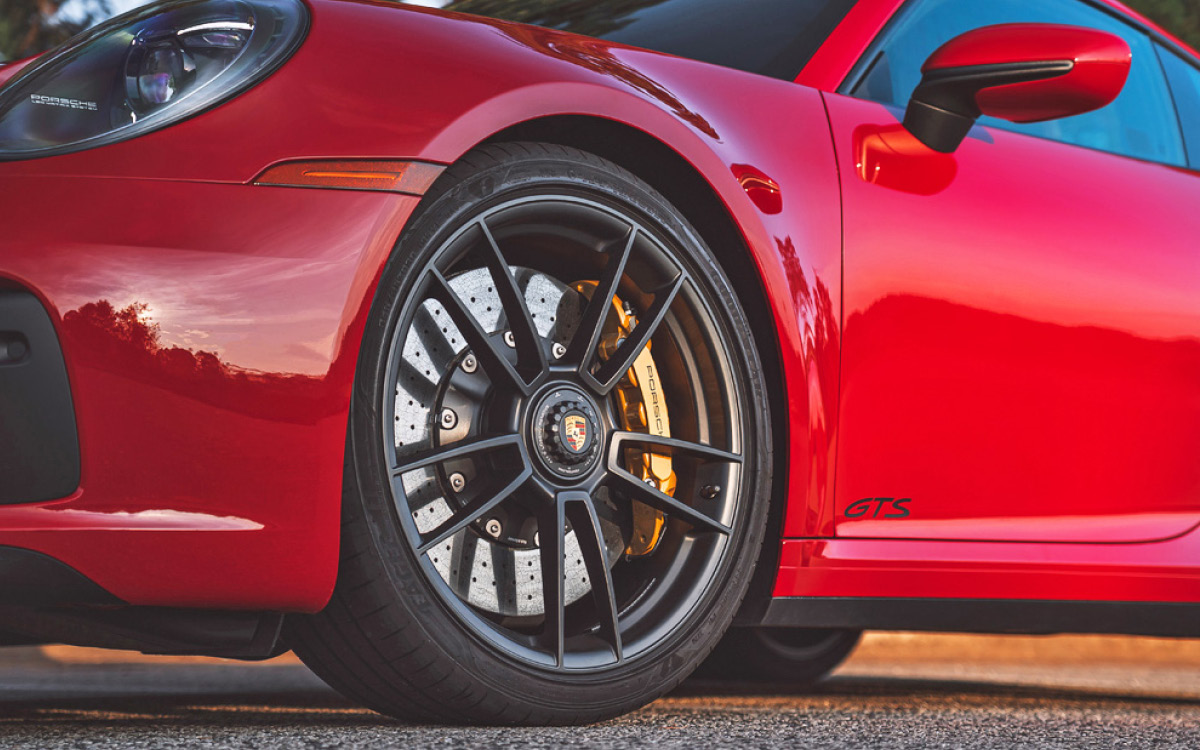
Track-Ready, Street-Livable
Porsche has positioned the 911 GTS between the Carrera S and the much more extreme GT3 track model, and reviewers praise the handling. “Body roll is practically non-existent, and we recorded a tenacious 1.06 g’s of stick around our skidpad,” said Car and Driver. Additional chassis performance options, including rear axle steering, can bring a GTS price close to an a GT3, which also appeals with its naturally aspirated 504-hp 4.0-liter flat six.
The GTS customer should study the option list carefully and choose wisely. For example, this Porsche offers the comfort of optional 18-way Sport Seats Plus with memory. Or, if you plan to hit the track often, you might want the non-reclining carbon-fiber full bucket seats. The latter will obviously not be as comfortable as the former for everyday driving.
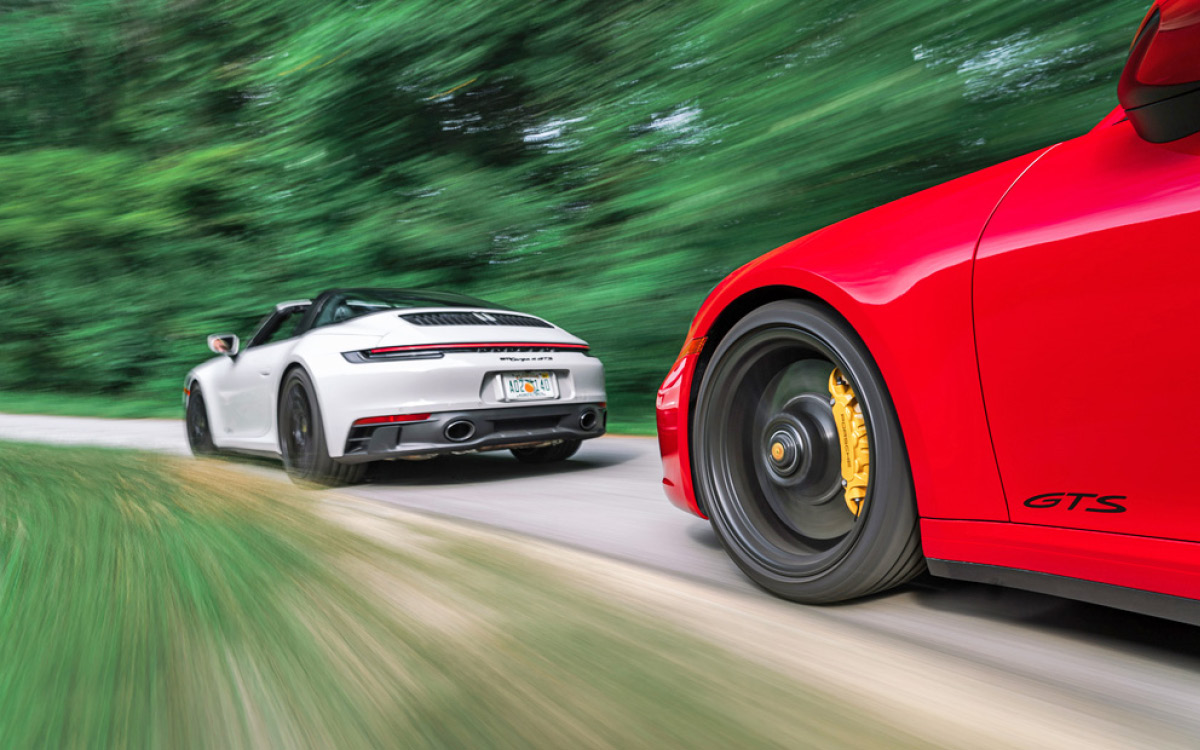
Make the 911 Carrera GTS Uniquely Yours
If you’d like some head-banging sound to go with that, the $8,700 Lightweight Package tosses the back seat and some sound insulation, adds thinner glass, and has the same seat choices. Combine the package with the carbon fiber seats, and you drop 55 pounds from the 3,433-pound weight (with PDK). In return for that 1.6-percent reduction, you’ll get “lawn-mower-rivaling 98-decibel shrieks through the cabin” at full throttle with the Sport Exhaust in its loudest position, Car and Driver reported.
And yet, this same car offers the “Exclusive Manufaktur” leather interior option for $17,110 and the full gamut of weight-and-luxury-adding Porsche options, so you can make a 911 GTS whatever you want it to be.
That’s a big part of the magic of the sprawling 2023 Porsche 911 28-car family. It’s also a big part of the delicious dilemma facing customers. The question is, how many of those would you like in your garage?
